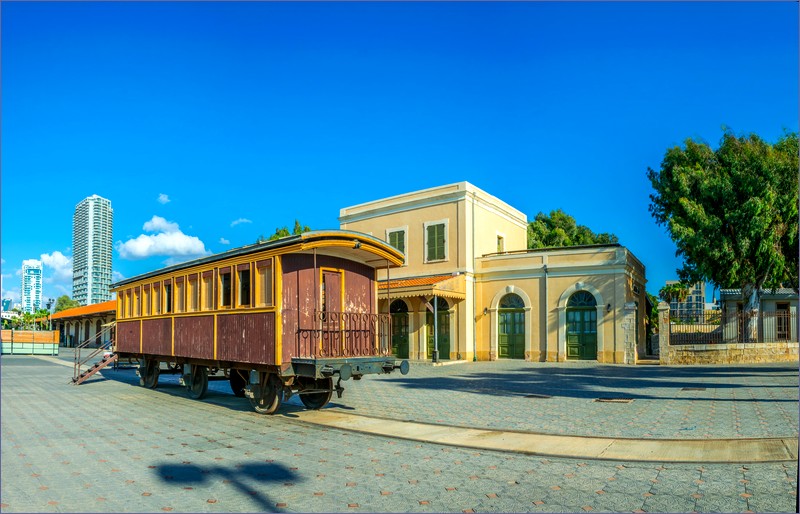Train travel in Israel is comfortable and is the best way to travel between major cities. Israel has a modern railway network that connects its major cities. In October 2019, a high-speed railway line connecting Jerusalem with Ben Gurion Airport and further with Tel Aviv was put into operation. Trains in Israel are operated by Israeli Railways. Currently, the railway network in Israel consists more than 1500 kilometers of track, and is undergoing constant expansion. All of the lines are standard gauge.
Israel does not have international railway connections. In the future, there are plans to extend the railway tracks to the Jordanian border, but it is not known when this will happen.
Last updated: 02.04.2024
Train travel in Israel – basic information
Trains in Israel are fast, comfortable and equipped with air-conditioning. Rolling stock fleet consists of modern trains such as Siemens Desiro, Siemens Viaggio Light and double-decker Bombardier Twindexx. ABB Scandia IC3 trains were withdrawn – one of them is exhibited in Railway Museum in Haifa.
Useful websites:
Israel Railways – official website. Timetable, prices (I have been blocked).
Railway map of Israel (Wikipedia)
Most popular train route is Tel Aviv – Jerusalem.
Intercity trains in Israel run on the following routes:
Tel Aviv – Haifa
Tel Aviv – Beer Sheva
Tel Aviv – Jerusalem
Train travel in Israel – tips:
– trains in Israel do not run on the Sabbath, from sunset on Friday to sunset on Saturday.
– if you want to to travel extensively across Israel (not only by train) you should obtain a Rav Kav Card. This is an electronic card introduced in 2007, which allows you easy payment of train and bus tickets for most Israeli carriers. The card can be recharged at railway and bus stations.
– Rav Kav cardholders can use a one-day ticket for trains on the entire Israeli rail network (Integrated Daily Flexible Rav-Kav Card), valid on the day of purchase until 04:30 the next day.
– to enter the platform, you must have a valid ticket and pass through security checks resembling simplified airport security checks.
– toilets at stations are free, but they are usually available in areas accessible with a valid ticket and after passing through security checks.
– ticket offices, ticket machines, and coffee shops are open at railway stations, especially at the largest ones.
– only second class is available on Israeli trains. Optional seat reservations apply on some trains.
– smoking is prohibited on trains; designated smoking areas are available at railway stations.
– all trains in Israel are equipped with vacuum toilets, electrical outlets, and Wi-Fi access.
– when photographing trains or infrastructure, you may be approached by security service agents. Agents may “ask” to see the photos or even request to delete of photos.
– luggage lockers are available at major stations.
– bicycles can be transported in designated carriages, and bicycle parking lots are available at most stations.
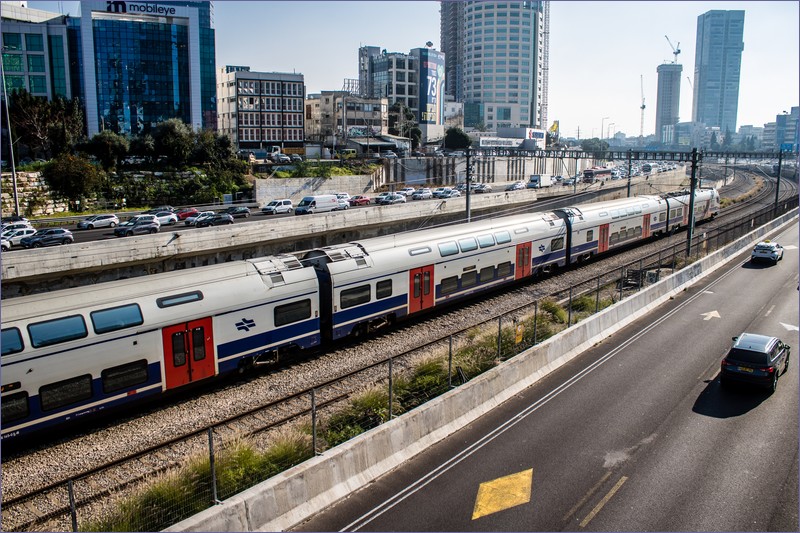
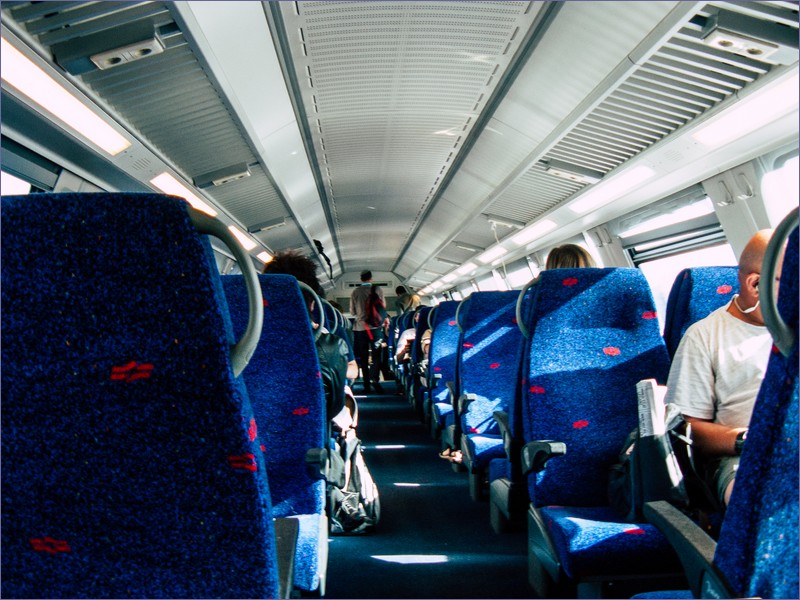
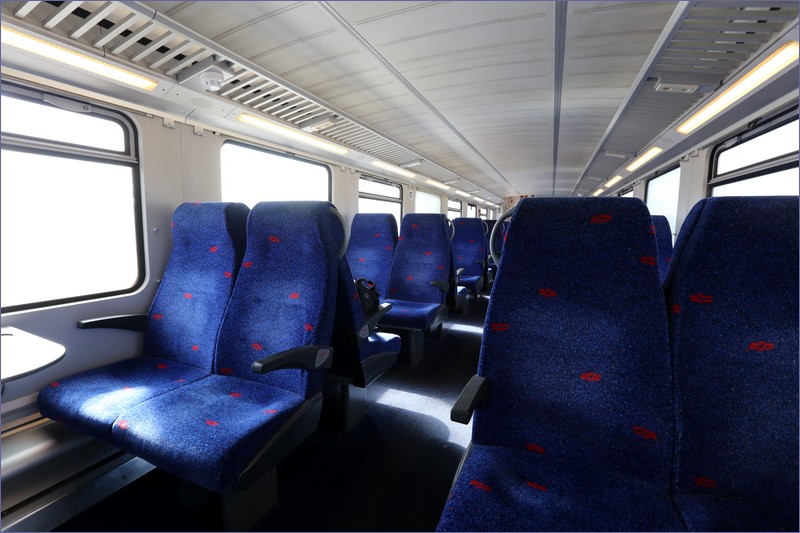
Israel Railway Museum
Israel Railway Museum in Haifa has been established in 1983. The museum is located at the disused eastern railway station in Haifa.
The museum is dedicated to the history of railways in Israel and neighboring countries, dating back to 1892 when the first line between Jerusalem and Jaffa was opened, through contemporary times. There is a section dedicated to the vision of the future of Israeli railways.
The exhibition is divided into an outdoor and indoor section. Among the exhibits, you will find, for example, the Palestine Railways salon car from 1922, used to transport authorities.
In addition to rolling stock, visitors can see various exhibits related to railway in Israel – photographs, documents, tickets, tools, and models of trains.
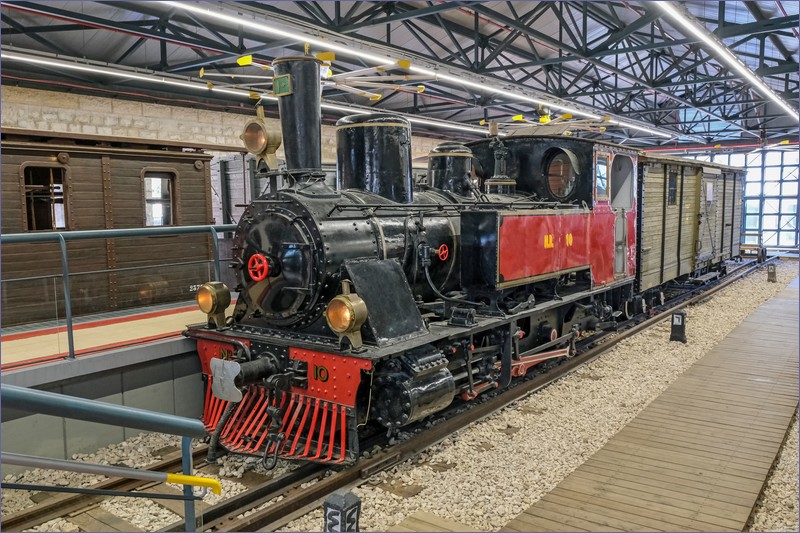
Funicular railway in Haifa
One of the tourist attractions in Haifa is the funicular railway known as the Carmelit. The railway was built between 1956 and 1959. Over the years, its operation has been suspended several times, but was resumed shortly after suspension.
The name of the railway comes from Mount Carmel, on which Haifa is situated – the railway tunnel, as it runs underground, was excavated in this mountain. The length of the track is about 1.8 km, with a height difference of 274 meters between the starting and ending stations. There are six stations along the route, and the entire line runs underground, which is why the often-described funicular railway is sometimes called a metro.
According to the website, the funicular railway in Haifa operates at the following hours:
Sunday-Thursday: 06:00-24:00
Friday: 06:00-15:00
Saturday: 20:00-24:00
There is a charge for using the funicular. Bicycles can be transported for an additional fee.
Funicular Railway in Haifa – official website
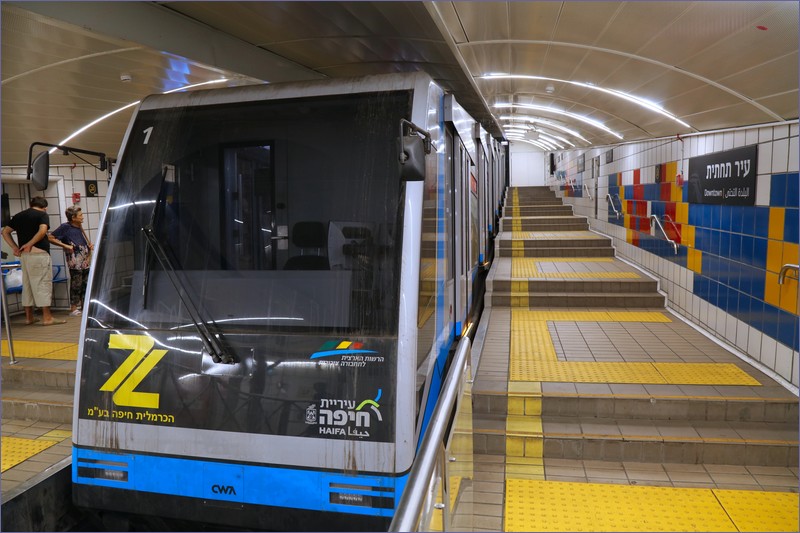
Train travel in Israel – old railway stations
In Israel, several old railway stations from the Ottoman Empire and British mandate periods have been preserved and renovated. Now these stations are used as tourist attractions. I found information about five such stations and one serving as the National Railway Museum, which I described earlier. For railway enthusiasts, these old stations can be an attraction, so I thought it worth mentioning them in the article.
Old Hatachana Station (Tel Aviv) – formerly part of the Jaffa-Jerusalem railway line, in operation from 1892 to 1948. The station, located in a district with trendy shops, cafes, beaches, and museums (near the Israel Defense Forces Museum), has been renovated and converted into a tourist attraction. The station complex covers 22 hectares, where two restored carriages from the British era have been placed, and the entire area has been turned into an “open space” – old workshop buildings, warehouses, etc., have been converted into a restaurant and cafes. The new Hatachana station is located 3 kilometers from the old station.
Old Station in Jerusalem – old terminus of the Jaffa-Jerusalem line, also known as “The First Station”. Old station has been renovated and converted into a place with gastronomic venues. Built during the Ottoman Empire, the station operated until 1948, and after a four-year break, the first freight train departed from here in 1952. The station was active until 1998, then fell into ruin. In 2005, the Bet Shemesh-Jerusalem route was rebuilt, but the tracks were only extended to today’s Jerusalem Malha station. In the same year, the renovation of the old station began, officially opening in 2013 as a commercial and gastronomic center.
Old Station in Beer Sheva – one of the few preserved landmarks in Beer Sheva is the preserved railway station from the Ottoman Empire era. It was built and put into operation in 1915, mainly serving the railway line used for transporting troops and equipment. Beer Sheva was connected to the railway line from Wadi Surar junction (now Nahal Sorek). In 1917, the city was occupied by the British, who built a branch connecting Beer Sheva to the railway line to Al-Kantara in present-day Egypt. The line operated until 1927. In 1956, the Israelis rebuilt the railway line to the city, but the tracks did not reach the old station, instead reaching the Beer Sheva North station. In 2000, the new Beer Sheva Center railway station was built, located 1250 meters from the old station. The old station is considered a monument and tourist attraction, with a steam locomotive likely standing in front of the station as a memorial.
Similar stations exist in the towns of Kfar Yehoshua and Afula. In old Kefar station building, a small museum has been arranged.
Related articles:
